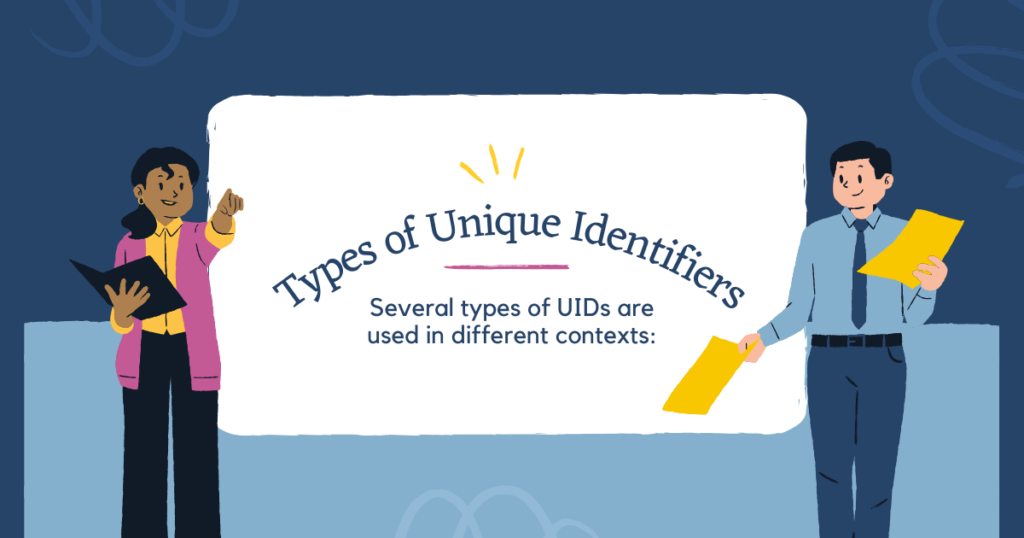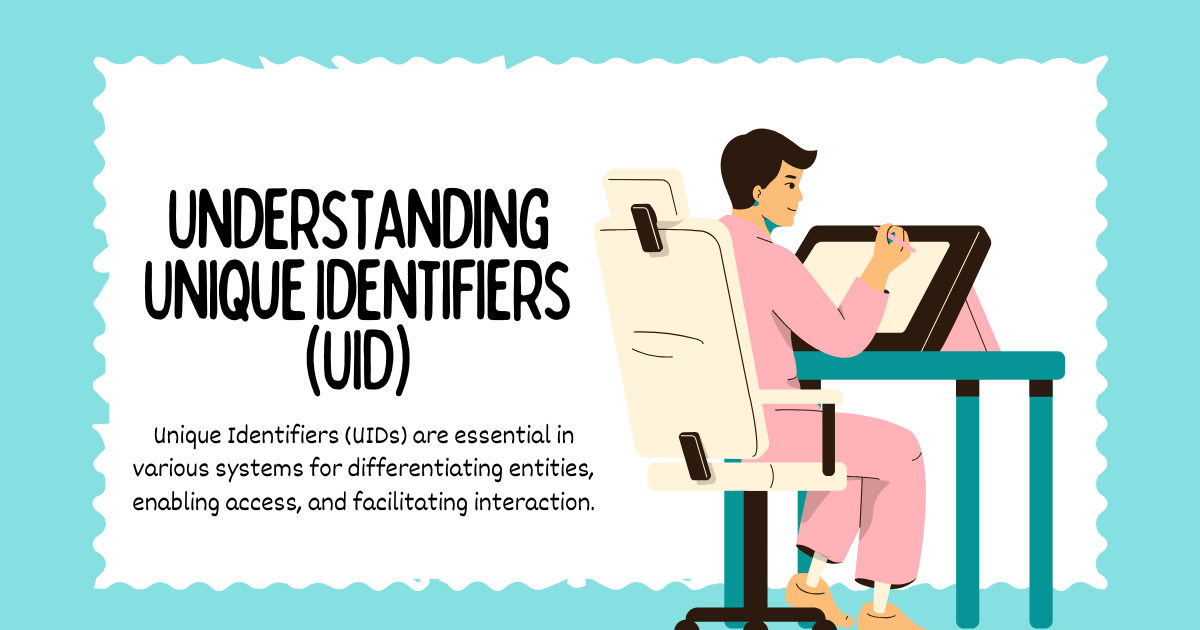Unique Identifiers (UIDs) are essential in various systems for differentiating entities, enabling access, and facilitating interaction. This article explores the concept of UIDs, their functionality, and their applications across different sectors.
What is a Unique Identifier (UID)?
A Unique Identifier (UID) is a distinctive numeric or alphanumeric string associated with a specific entity within a system. It serves to distinguish that entity from all others, ensuring that each one can be uniquely identified and accessed. UIDs are crucial for preventing confusion and unintentional overwriting of records.
Key characteristics of a UID:
- Uniqueness: A UID must be unique across the system to avoid ambiguity.
- Persistence: Ideally, a UID should remain constant throughout the entity’s lifecycle.
- Accessibility: The UID should allow easy access to the entity’s information and functionalities.
How UIDs Work

UIDs are employed in various scenarios to ensure the correct identification and management of entities. For example, when users register on a website, they are assigned a unique username or user ID. In databases or spreadsheets, UIDs are represented in a specific field or column, which simplifies sorting and filtering.
In supply chain management, UIDs (such as serial numbers) are assigned to components or entire assets to track the product’s origin and manage issues effectively. In healthcare, patient names can be replaced with unique codes to protect privacy and prevent duplicate records.
Types of Unique Identifiers

Several types of UIDs are used in different contexts:
- Uniform Resource Identifier (URI): Used to address content on the Internet.
- Uniform Resource Locator (URL): A type of URI that specifies the location of web pages.
- Universal Unique Identifier (UUID): Identifies objects or entities on the Internet.
- Global Unique Identifier (GUID): Used by Microsoft for entities like Word documents.
- Bank Identifier Code (BIC): Uniquely identifies financial institutions.
- Unique Device Identifier (UDID): Assigned to Apple devices.
- Service Set Identifier (SSID): Names wireless local area networks.
- National Provider Identifier (NPI): Required for healthcare providers in the US.
- MAC Address: A computer’s hardware number in a local area network.
- Digital Object Identifier (DOI): Used to uniquely identify research papers and other digital documents.
The Importance of UIDs
UIDs are vital for several reasons:
- Data Integrity: They ensure that each record is unique, preventing confusion and data corruption.
- Efficient Management: UIDs simplify sorting, filtering, and accessing specific data within large datasets.
- Tracking and Tracing: In supply chains and healthcare, UIDs facilitate the tracking of products and patient information.
- Security and Privacy: UIDs can protect sensitive information by using unique codes instead of personal details.
- System Updates and Deletion: UIDs ensure that updates and deletions are applied to the correct records.
Examples of UIDs in Different Contexts

| Context | UID Example | Description |
|---|---|---|
| Academic Publishing | DOI (Digital Object Identifier) | Uniquely identifies research papers and other digital documents. |
| E-commerce | Product Serial Number | Tracks individual products in the supply chain. |
| Healthcare | Patient ID | Protects patient privacy while ensuring unique identification. |
| Government | Aadhaar (India) | A 12-digit unique identity number for residents of India. |
| Web | URL (Uniform Resource Locator) | Specifies the address of a resource on the internet. |
| Finance | BIC (Bank Identifier Code) | Identifies banks and financial institutions worldwide. |
| Technology | MAC Address | Unique identifier assigned to network interfaces for communications within a network segment. |
| Gaming | Raistar UID, Ajju Bhai UID | Unique identification numbers assigned to players in online games, allowing others to find and interact with them. |
Optimizing Content with Secondary Keywords
- UID Download: This term could refer to downloading software or data related to unique identification, such as tools for generating or managing UUIDs.
- Raistar UID/Ajju Bhai UID: In the context of online gaming, particularly Free Fire, “Raistar UID” and “Ajju Bhai UID” refer to the unique identification numbers assigned to these popular players. Fans and other players use these UIDs to find and interact with them in the game.
- UID Full Form: The full form of UID is “Unique Identifier,” which is essential for understanding its purpose and application across various fields.
Aadhaar: A Unique Identification System in India
Aadhaar is a 12-digit individual identification number issued by the Unique Identification Authority of India (UIDAI). It serves as proof of identity and address for residents in India. Aadhaar is unique for each individual and remains valid for a lifetime. It helps residents access various services, including banking and mobile phone connections. The Aadhaar system aims to eliminate duplicate and fake identities in government and private databases.
Conclusion
Unique Identifiers (UIDs) are fundamental for ensuring data integrity, efficient management, and secure access across various systems. From identifying patients in healthcare to tracking products in supply chains and uniquely identifying individuals, UIDs play a crucial role in the modern digital world. Understanding the different types and applications of UIDs is essential for anyone involved in data management, system design, or online security.
Read More: BaddieHub: Exploring the Epicenter of Confidence | Two Best Colour Prediction Games: Daman Game and 91 Club




